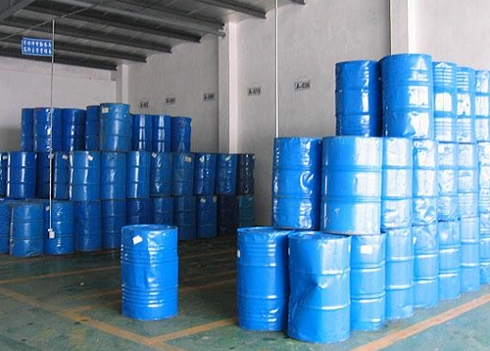SunSirs: Analysis of propylene oxide market in 2023
January 26 2024 10:08:42 SunSirs (John)
Price trend of propylene oxide in 2023:
According to the Commodity Market Analysis System of SunSirs, the propylene oxide market experienced slight fluctuations and an increase in 2023. On January 1, 2023, the average price of propylene oxide from enterprises was 8,966.67 RMB/ton, and on December 31, the average price of propylene oxide enterprises was 9,225.00 RMB/ton, with a 2.88% increase in the annual market.
In the first half of the year, the cost support in January was average, with no pressure on the supply side, and the demand side mainly followed up on demand. Downstream stocking was concentrated before the holiday, and the propylene oxide market saw a narrow rise. In February, the raw material propylene fluctuated narrowly, the price of raw material liquid chlorine rose, and the cost support increased. Some devices underwent load reduction and maintenance, resulting in a reduction in market supply. The demand side was wait-and-see and followed up, and the propylene oxide market operated strongly. In March, there was no pressure on the supply side at a low level, supporting market prices to rise. In late March, cost support weakened, and shipments from factories in production were average. The market trading atmosphere was light, and the propylene oxide market was weak and consolidating. The cost side had little impact in April, while the demand side remained flat and followed suit, resulting in a narrow decline in the market. In May, the propylene oxide market fluctuated slightly, with some fluctuations on the supply side in the first half of the month. The market supply and demand pattern was tight, and the demand side watched and followed moderately. The supply side had no pressure to support the strong operation of the propylene oxide market. In the second half of the month, as the price of raw material propylene fell, the raw material liquid chlorine fluctuated at a low level. In addition, the supply side's capacity utilization rate slightly rebounded, and the demand side's reduction followed up, weakening the propylene oxide market. In June, the demand side mainly followed up with a moderate amount of rigid demand, while changes in supply side equipment affected the market. The trend of the propylene oxide market fluctuated and fell.
In the second half of the year, the cost support in July was average, factory shipments were still acceptable, and the demand side watched and followed up, resulting in a narrow consolidation of the market. In mid August, factory shipments were average, but downstream follow-up had weakened slightly. Some inventories had been slightly under pressure, and some companies had lowered their prices. In September, the cost support was relatively strong, with some devices experiencing a decrease in load. The demand band followed suit, but the market fluctuated slightly and rose. The cost support weakened in October, with downstream consumption of inventory raw materials as the main source. The ability to follow up on propylene oxide was average, and the market slightly declined. In November, some inventory on the supply side slightly accumulated at the beginning of the month, and prices slightly loosened. In mid month, there were individual fluctuations in the supply side equipment, and the demand side performance was flat, with a stable but weak market trend. The propylene oxide market slightly declined in December, with average cost support. In mid month, factory shipments were flat, and downstream follow-up was limited. Some inventory was under pressure, and the market was weak. In late December, downstream purchases followed up, and inventory pressure was controllable. Some companies quoted higher prices, and the market atmosphere was still fair.
If you have any questions, please feel free to contact SunSirs with support@SunSirs.com.
- 2024-04-26 SunSirs: The Propylene Oxide Market Was Experiencing Narrow Fluctuations, with Downstream Following Suit on a Wait-and-watch Basis
- 2024-04-18 SunSirs: The Market Situation of Propylene Oxide Had Slightly Declined (April 10-17)
- 2024-04-09 SunSirs: Downstream Followed Up on a Basis of Wait-and-see, and Propylene Oxide Market Was Consolidating
- 2024-04-01 SunSirs: The Market Price of Propylene Oxide Slightly Increased in March
- 2024-03-28 SunSirs: The Market Price of propylene oxide Was Stable, and the Atmosphere Was Stronger (March 20-25)



